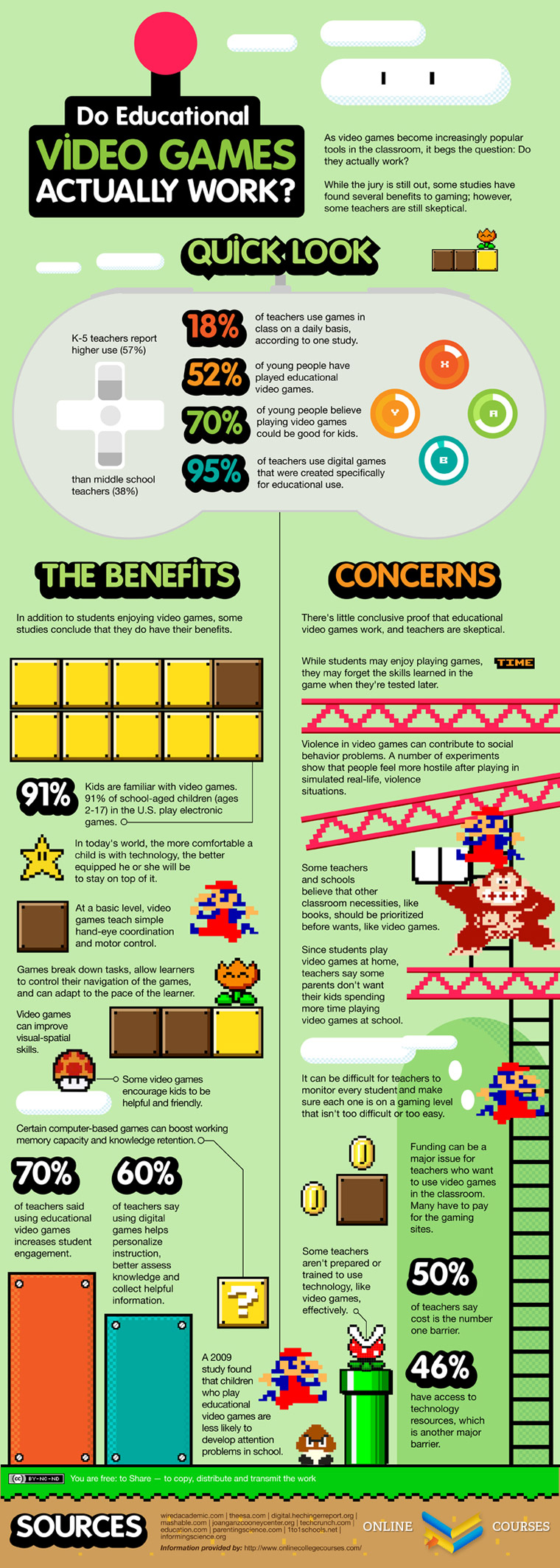Do Students Benefit from Game-Based Learning? [#Infographic]
Game-based learning is all the rage in classrooms these days. With the amount of time students spend outside of school crouched in front of their Xboxes or mesmerized by glowing handheld displays, it is only natural that educators would look to captivate students with similar games in school.
But, for all of the fun and interactivity of popular and widely sold consumer games, such as Halo or the Sims, the question remains: Do video games actually work as a learning tool?
To help educators weigh the benefits of game-based learning (or #gbl as it’s called on Twitter) against potential concerns, the folks at Online College Courses released this compelling infographic. Did you know, for instance, that some 95 percent of teachers say they have used video games designed for educational use in their classrooms, or that 18 percent of teachers say they use video games in class on a daily basis?
Despite these numbers, the graphic also points out that there remains “little conclusive proof” that video games actually work in class, and many teachers remain skeptical. Games also present certain comprehension challenges, and certain games that include violence have been linked to social or behavioral problems, according to research.
Want to learn more? Take a look at the infographic below. And let us know where you stand on the issue of game-based learning.








